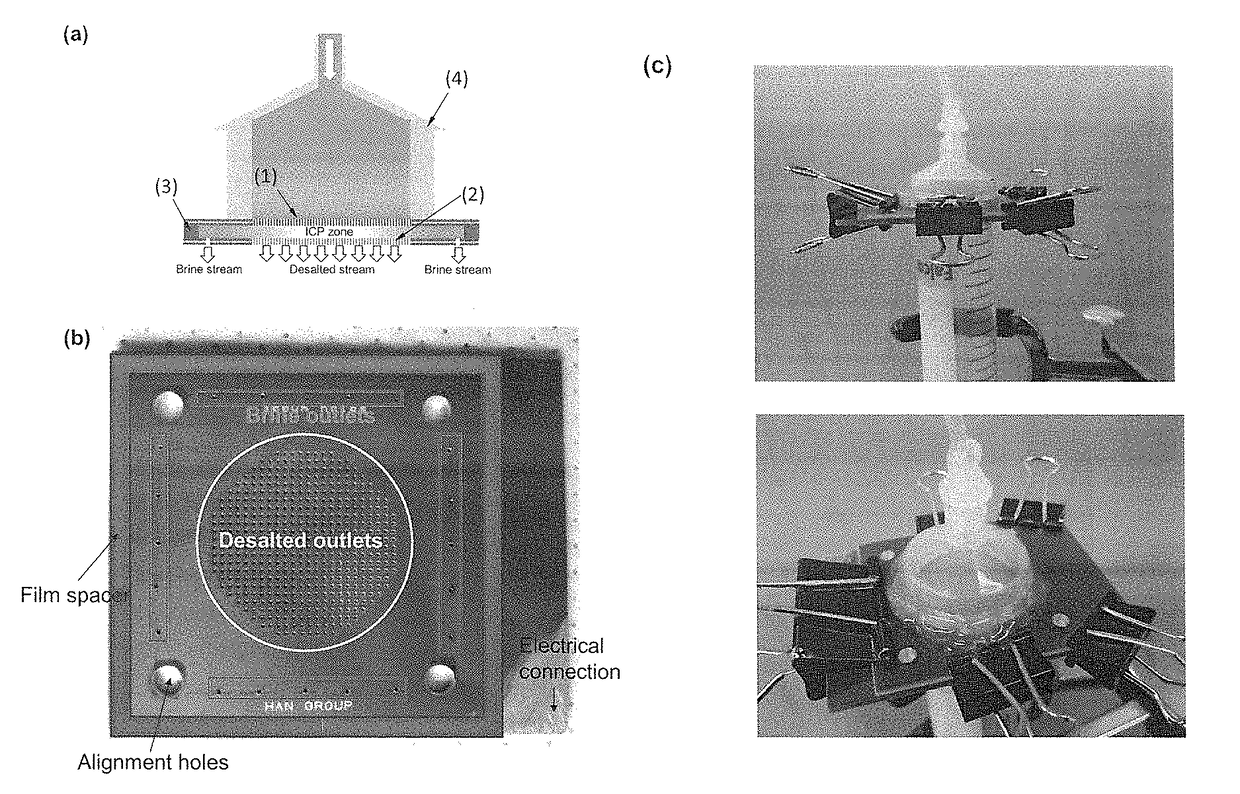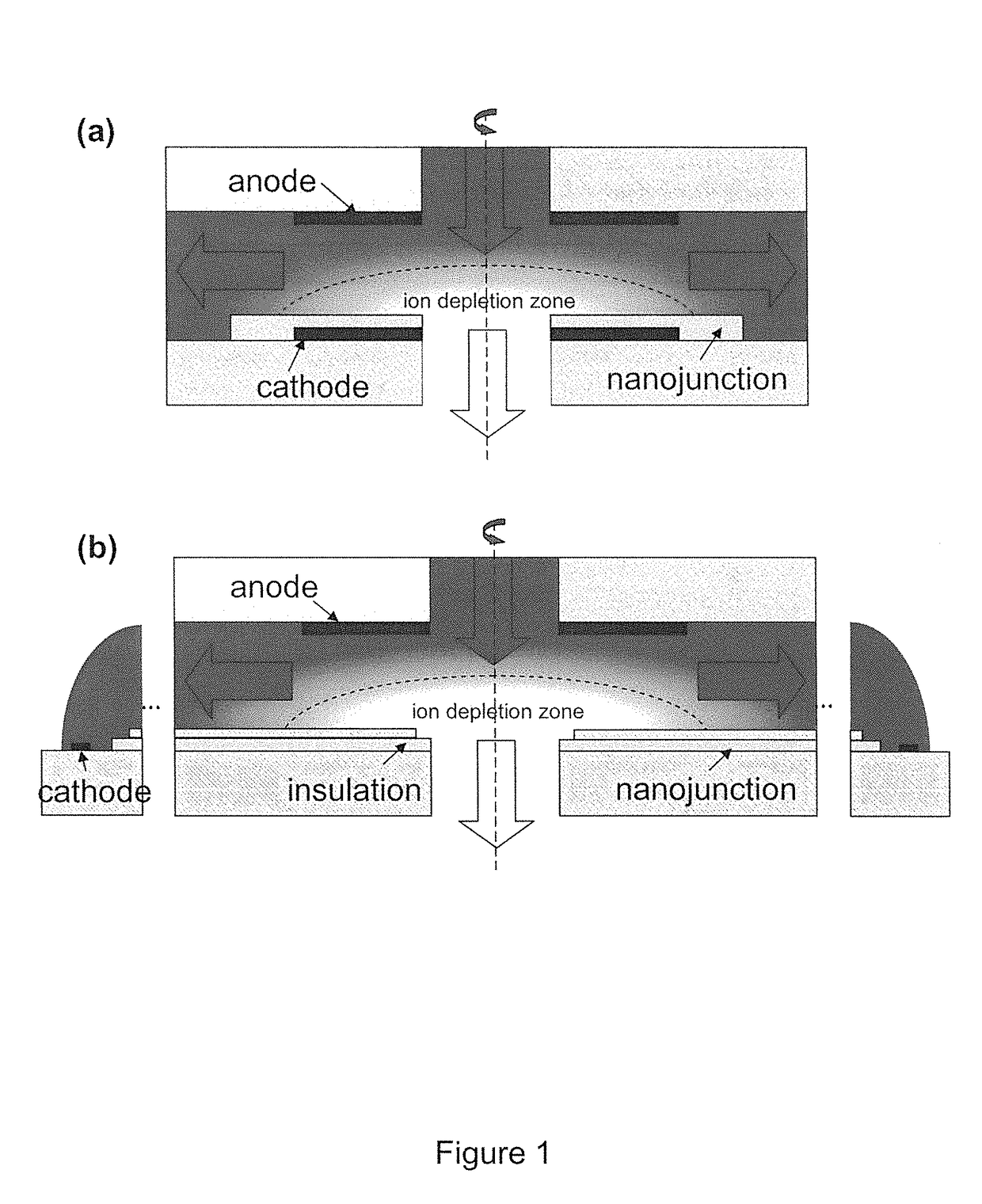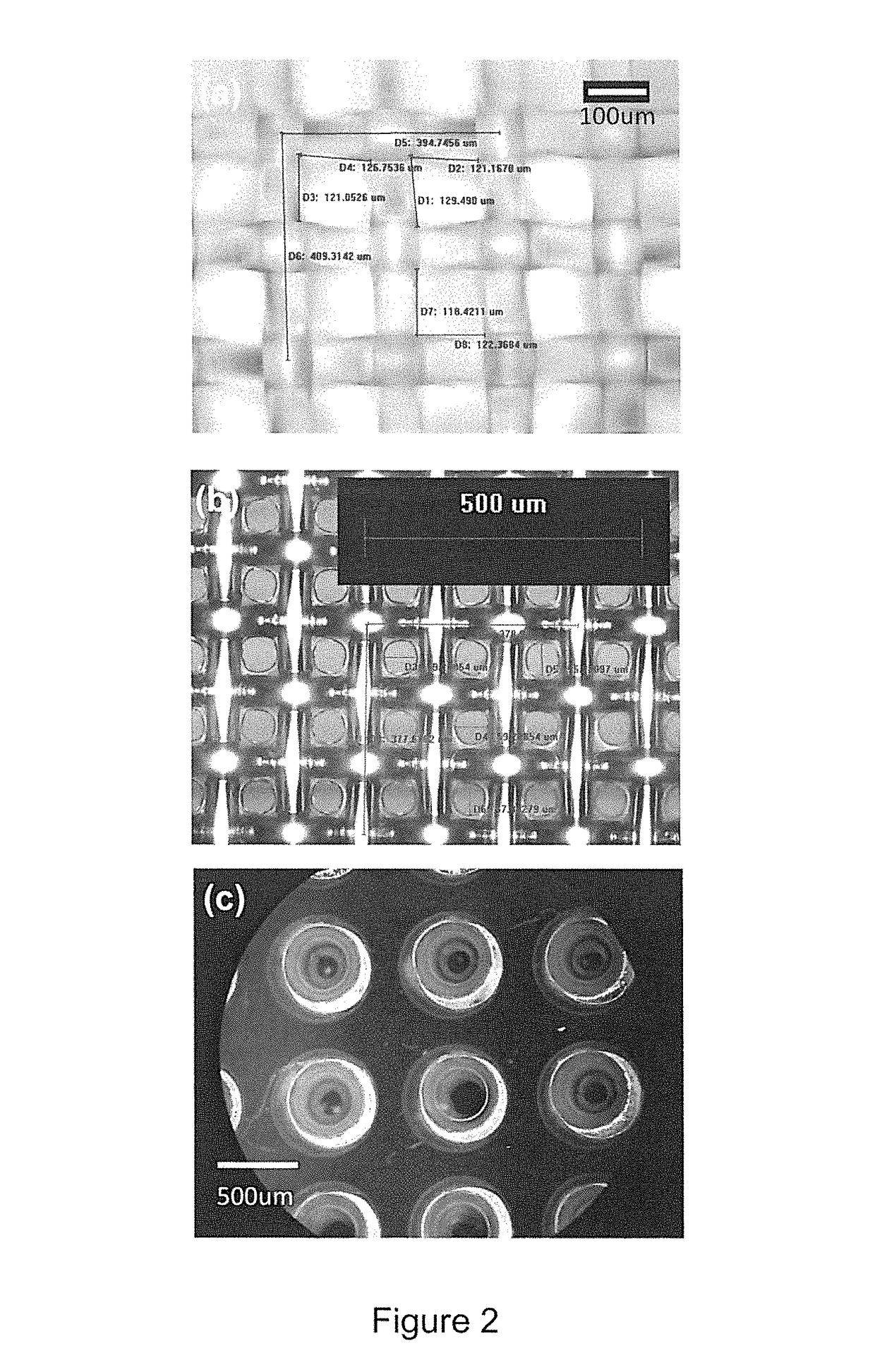Method of building massively-parallel ion concentration polarization separation device
a polarization separation and massive ion technology, applied in separation processes, membranes, filtration, etc., can solve the problems of heavy metal contamination in ground water, major health problems, and human health risks, and achieve the effect of reducing the potential for membrane (nanojunction) fouling
- Summary
- Abstract
- Description
- Claims
- Application Information
AI Technical Summary
Benefits of technology
Problems solved by technology
Method used
Image
Examples
Embodiment Construction
[0028]Thus, the invention provides for a water separation device, such as a microporous device, comprising:
[0029]a chamber characterized by an inlet port, a bottom support and a volume to receive water comprising ions to be separated, such as a brine;
[0030]wherein said bottom support comprises a porous ion concentration polarization matrix configured to permit water depleted in said ions to exit the chamber and at least one outlet for concentrated water stream comprising said ions;
[0031]at least one anode and at least one cathode functionally connected to said ion concentration polarization matrix.
[0032]Referring to FIG. 3, the chamber 4 is preferably located above the bottom support 5 to permit gravity to cause the water to flow through the device. The chamber further defines a volume 6 to receive and hold water to be purified. The volume of the chamber is not critical to its utility. In designing devices for personal use, the volume can be less than 1 liter, such as less than 0.5 ...
PUM
| Property | Measurement | Unit |
|---|---|---|
| diameter | aaaaa | aaaaa |
| diameter | aaaaa | aaaaa |
| surface area | aaaaa | aaaaa |
Abstract
Description
Claims
Application Information
 Login to View More
Login to View More - R&D
- Intellectual Property
- Life Sciences
- Materials
- Tech Scout
- Unparalleled Data Quality
- Higher Quality Content
- 60% Fewer Hallucinations
Browse by: Latest US Patents, China's latest patents, Technical Efficacy Thesaurus, Application Domain, Technology Topic, Popular Technical Reports.
© 2025 PatSnap. All rights reserved.Legal|Privacy policy|Modern Slavery Act Transparency Statement|Sitemap|About US| Contact US: help@patsnap.com



